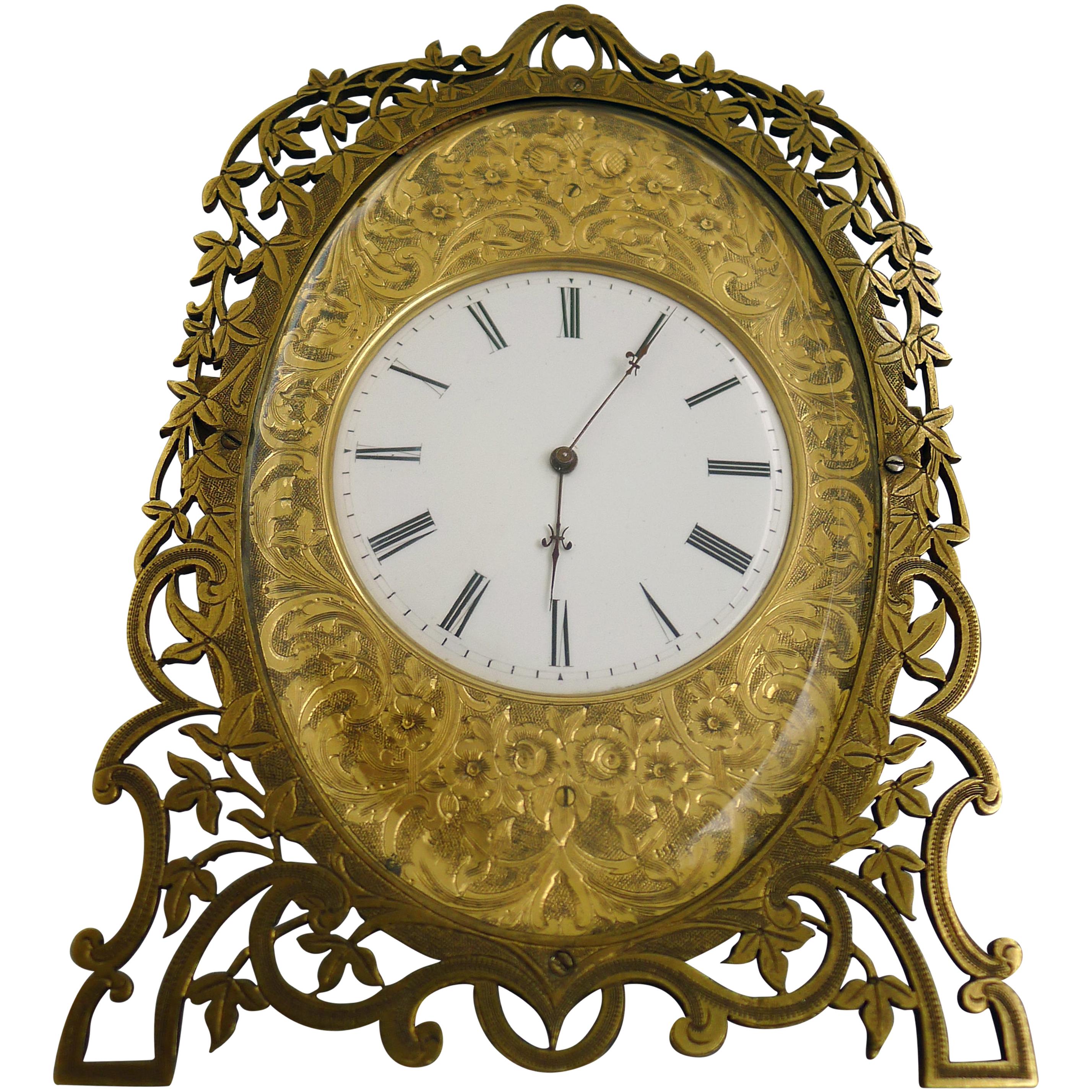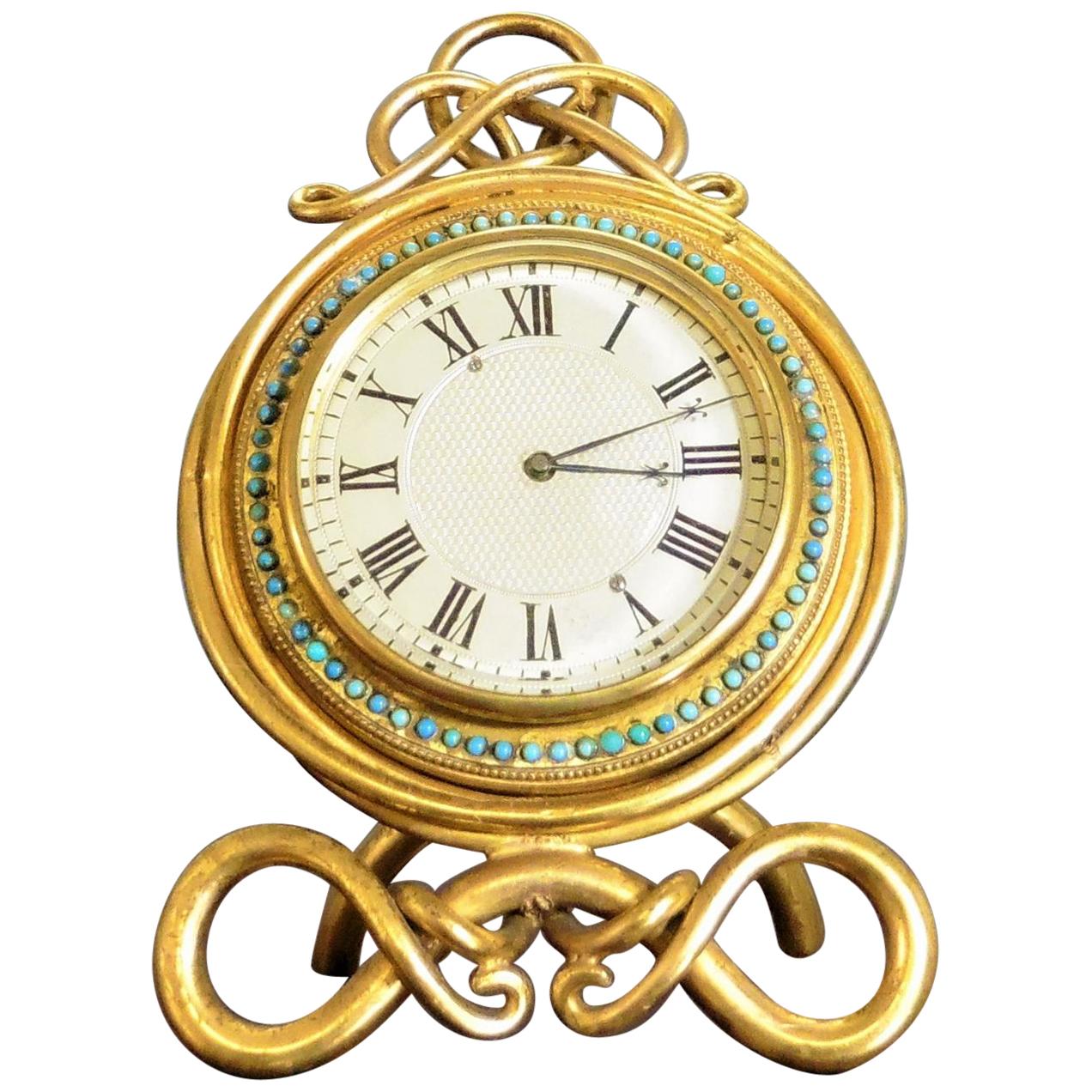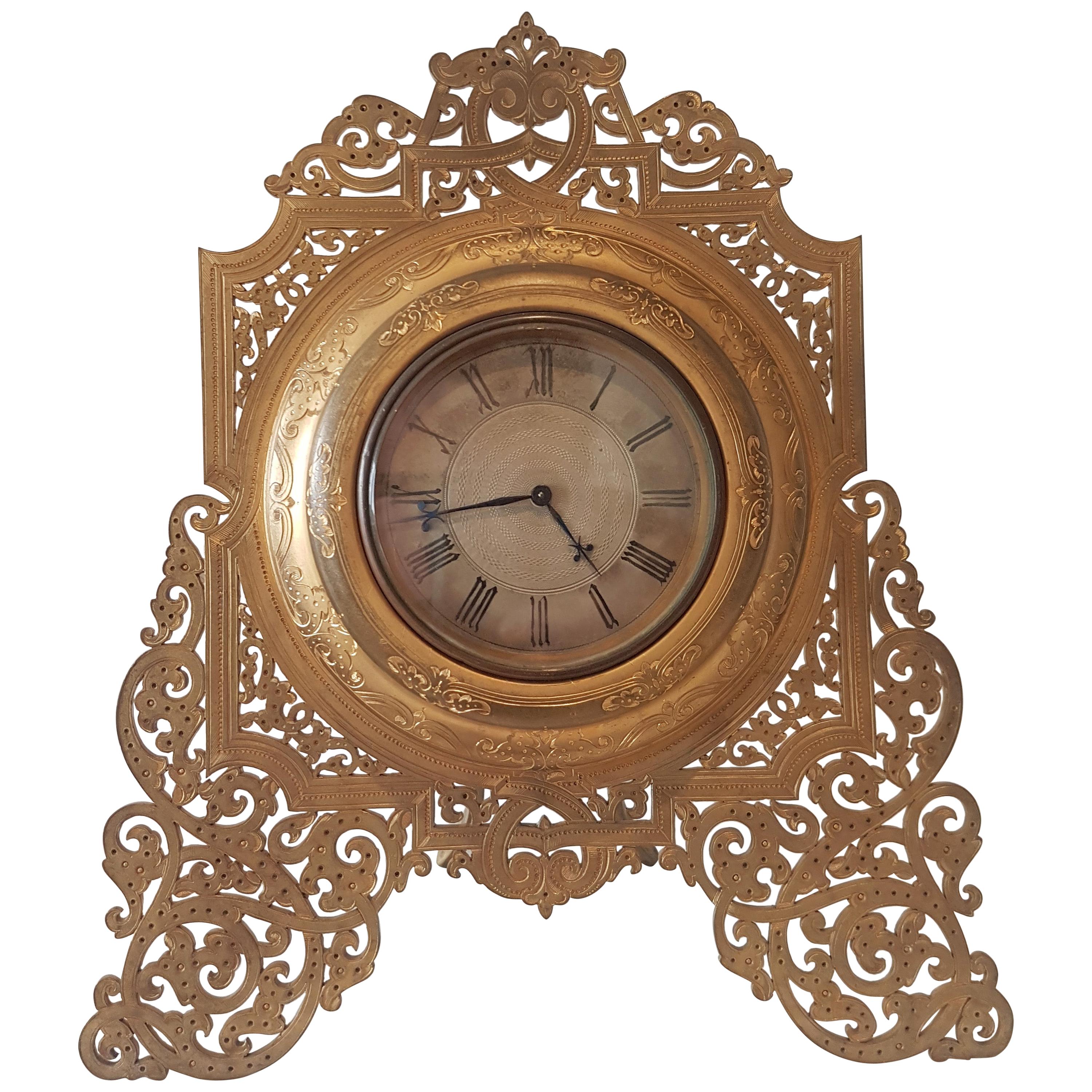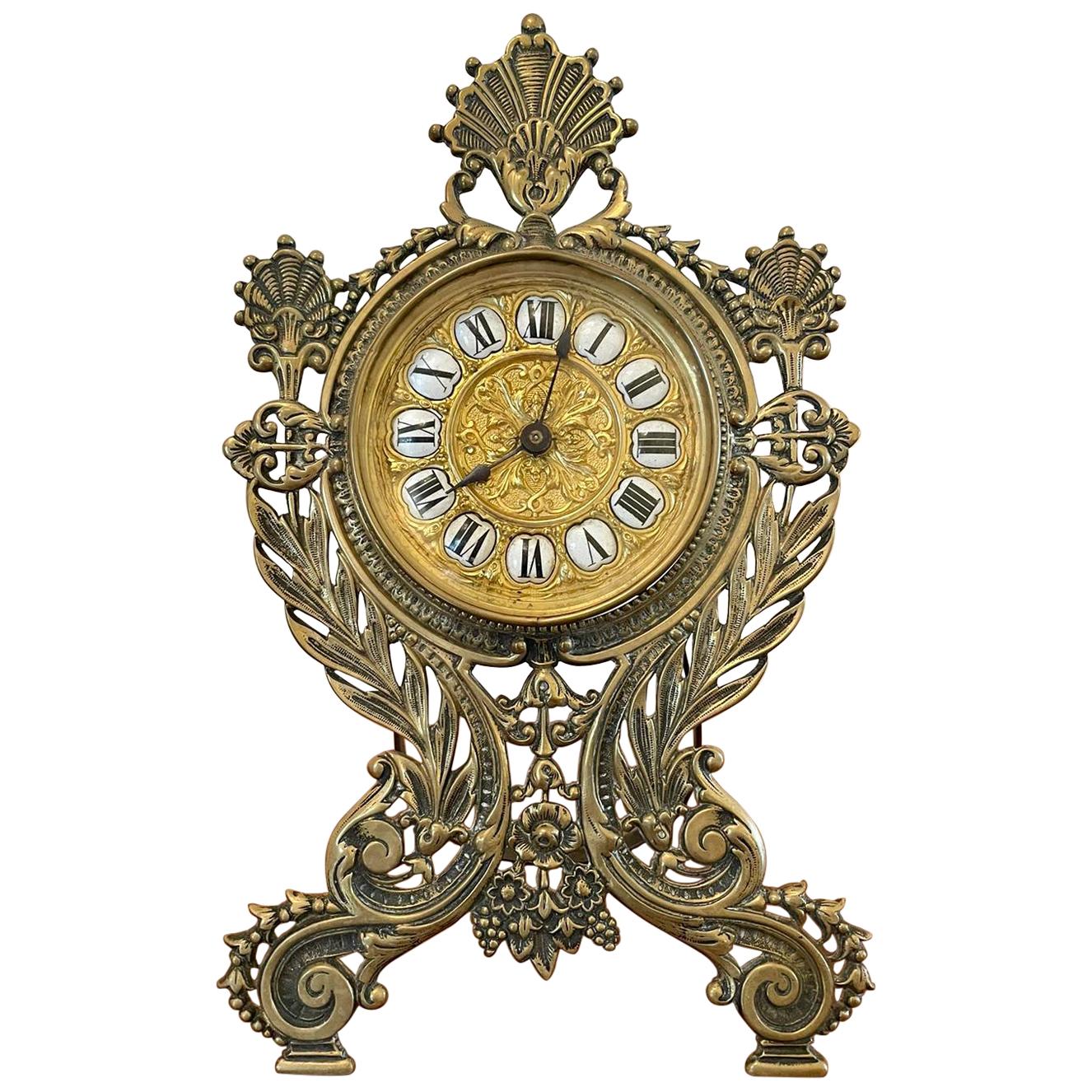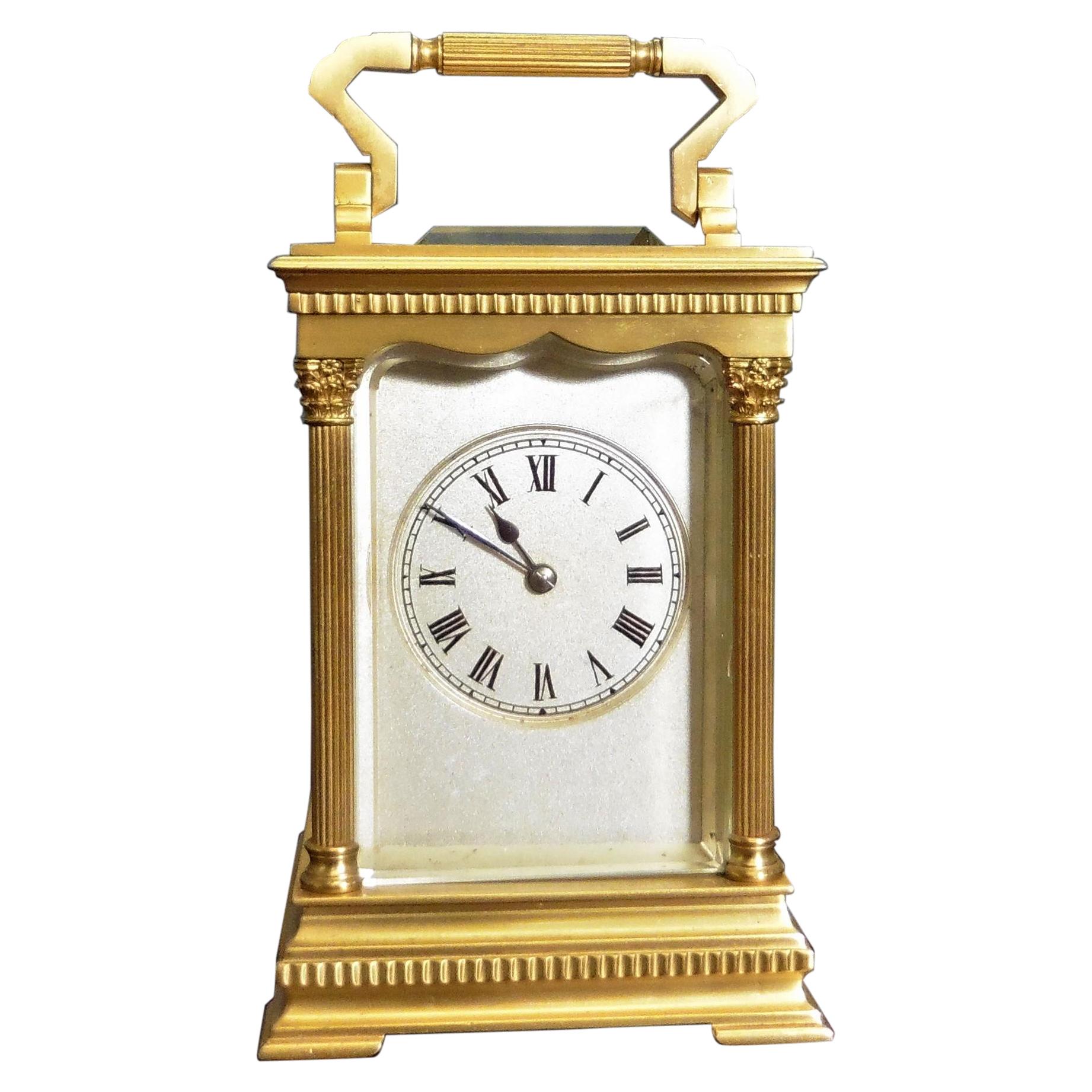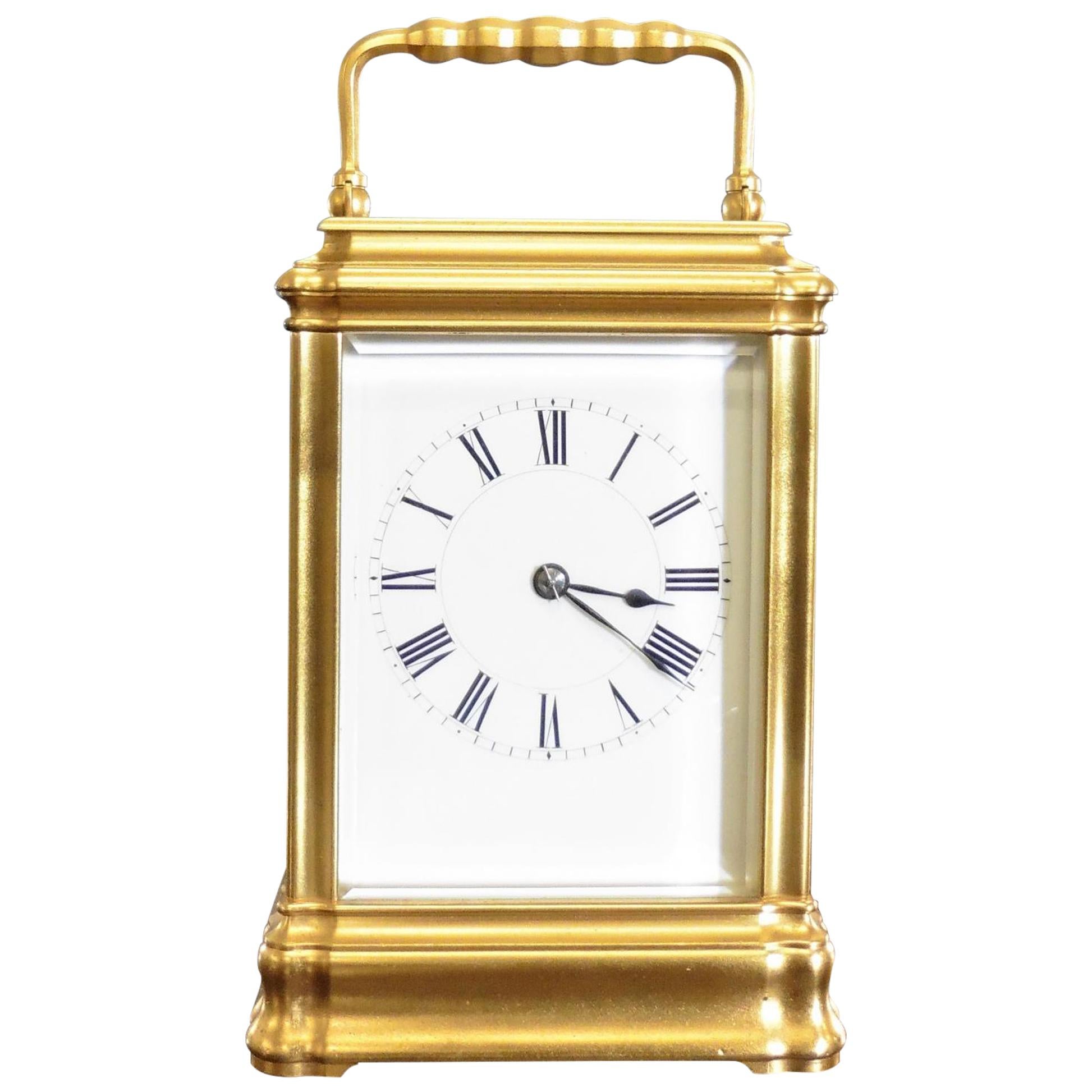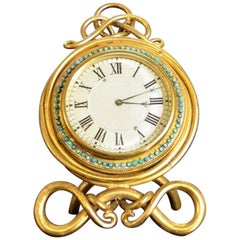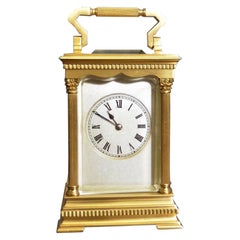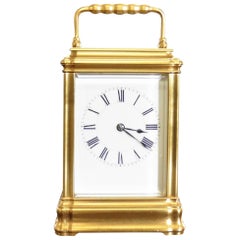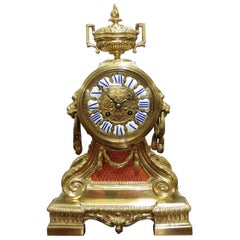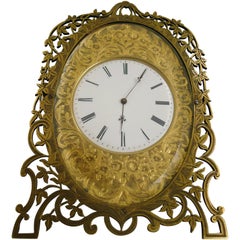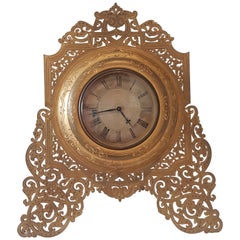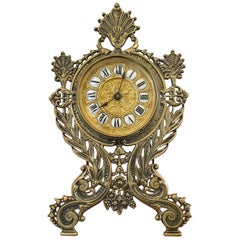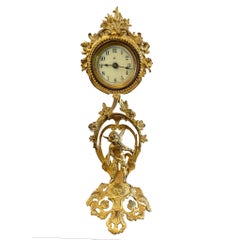Items Similar to Early Victorian Gilded Strut Clock in the Style of Thomas Cole
Want more images or videos?
Request additional images or videos from the seller
1 of 6
Early Victorian Gilded Strut Clock in the Style of Thomas Cole
$5,011.25
£3,750
€4,349.65
CA$7,063.49
A$7,757.08
CHF 4,050.89
MX$92,583.98
NOK 51,320.93
SEK 47,833.13
DKK 32,486.21
About the Item
Early Victorian Strut clock in the style of Thomas Cole.
Gilded frame with engraved scroll work, oval beaded bezel surrounding a beautiful engine turned and silvered dial with Roman numerals and Trefoil hands.
Eight day French movement with lever escapement, circa 1840.
- Dimensions:Height: 7.5 in (19.05 cm)Width: 6.25 in (15.88 cm)Depth: 4 in (10.16 cm)
- Style:Victorian (Of the Period)
- Materials and Techniques:
- Place of Origin:
- Period:
- Date of Manufacture:1840
- Condition:Wear consistent with age and use. very good condition.
- Seller Location:Norwich, GB
- Reference Number:1stDibs: LU4037318463692
About the Seller
5.0
Vetted Professional Seller
Every seller passes strict standards for authenticity and reliability
1stDibs seller since 2018
66 sales on 1stDibs
Typical response time: 3 hours
Associations
The British Antique Dealers' AssociationLAPADA - The Association of Arts & Antiques Dealers
- ShippingRetrieving quote...Shipping from: Norwich, United Kingdom
- Return Policy
More From This Seller
View AllGilded Brass French Strut Mantel Clock
Located in Norwich, GB
Gilded Strut clock with intertwined ribbon decoration, the front embellished with turquoise pastes, gilded bezel with bevelled glass.
Silvered engine turned dial with Roman nume...
Category
Antique 19th Century French Victorian Mantel Clocks
Materials
Brass
Victorian Gilded Striking Carriage Clock
Located in Norwich, GB
Victorian gilded striking carriage clock
Victorian carriage clock in a fine gilded case standing on a raised base with dentil moulding and r...
Category
Antique 19th Century French Victorian Carriage Clocks and Travel Clocks
Materials
Brass
Victorian Gilded Carriage Clock
Located in Norwich, GB
Victorian Gorge case carriage clock.
Victorian carriage clock in a finely gilded gorge case, standing on a raised base with pad feet. Bevelled g...
Category
20th Century French Victorian Carriage Clocks and Travel Clocks
Materials
Brass
French Brass Bracket Clock
Located in Norwich, GB
French brass bracket clock
The brass dial with individual segmented blue enamel Roman numerals.
The case with Rococo scrolling decoration, red silk frets and magnificent Lions...
Category
Antique 19th Century French Victorian Mantel Clocks
Materials
Brass
Ornate French Gilded Repeating Carriage Clock
Located in Norwich, GB
Ornate French Gilded Repeating Carriage Clock
Ornate French gilded carriage clock housed in a decorative case with curved side panels. Barl...
Category
Antique 1880s French Carriage Clocks and Travel Clocks
Materials
Brass
French Brass Cased Carriage Clock by Drocourt
Located in Norwich, GB
Brass cased Carriage clock in a bevel glazed cornice case with oval viewing aperture with silvered platform lever escapement. Gilded dial mask with foliate engraving.
Enamel dial ...
Category
Antique 1880s French Victorian Carriage Clocks and Travel Clocks
Materials
Brass
You May Also Like
Mid-19th Century Gilt Bronze Strut Clock in the Style of Cole
Located in London, GB
Mid-19th century gilt bronze strut clock in the style of Cole. Original gilding and very fine engraving make this a most attractive clock. The pierced ormolu frame gives a very light...
Category
Antique 1860s English Table Clocks and Desk Clocks
Materials
Enamel, Ormolu
Large English Late 19th Century Ormolu Strut Clock in Manner of Cole
Located in London, GB
Large beautifully cut and engraved ormolu English Victorian strut clock in the manner of Cole. Silvered dial with engine turned centre with beaut...
Category
Antique 1860s English Table Clocks and Desk Clocks
Materials
Ormolu
19th Century Victorian Antique Ornate Brass Desk Clock
Located in Suffolk, GB
19th century Victorian antique ornate brass desk clock having an exquisite ornate brass and enamel dial with original hands, eight day French movement in a very pretty ornate brass c...
Category
Antique Mid-19th Century French Early Victorian Table Clocks and Desk Cl...
Materials
Brass
$1,202 Sale Price
20% Off
Fine Antique Victorian French Ornate Gilded Clock
Located in Suffolk, GB
Fine antique Victorian French ornate gilded clock with delightful ornate cupids and flowers. The clock is an 8 day movement with original hands and a cupi...
Category
Antique 19th Century French Victorian Mantel Clocks
Materials
Brass
$1,277 Sale Price
20% Off
Magnificent Quality Antique Ornate Gilded Brass Miniature Longcase Clock
Located in Suffolk, GB
Magnificent quality antique Edwardian ornate gilded brass miniature longcase clock having a beautiful and quality ornate gilded brass case with a circular porcelain dial with origina...
Category
Early 20th Century English Edwardian Grandfather Clocks and Longcase Clocks
Materials
Brass
$1,801 Sale Price
20% Off
Elegant quality antique Victorian ornate brass desk clock
Located in Ipswich, GB
Elegant quality antique Victorian ornate brass desk clock, having a quality ornate brass frame with a circular dial to the centre with the original hands and an eight day movement.
...
Category
Antique Early 19th Century Early Victorian Table Clocks and Desk Clocks
Materials
Brass
More Ways To Browse
Antique Victorian Mantel Clocks
French Gilt Brass Mantel Clock
French Gilded Antique Clocks
Gilded French Clock
Thomas Clocks Antique
Strut Clock
Cole Clocks
Gilded Victorian Mantel Clock
Thomas Cole Strut Clock
All Antique Clocks
Clock And Candelabra
19th Century French Column Clocks
Napoleon Clock Antique Clocks
Eight Clock
Antique Clock Numerals
Black French Clock
Ormolu Cherubs
Royal Palais
